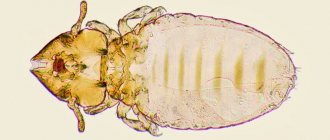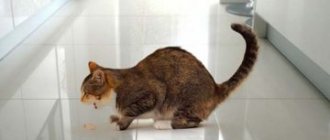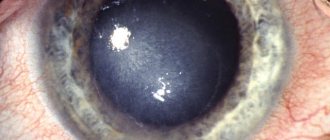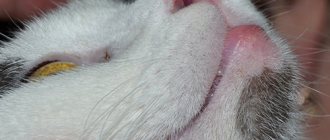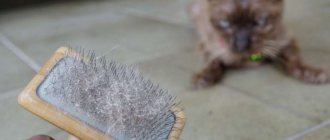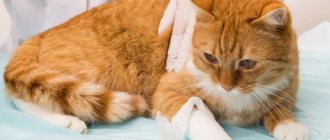The cat's body is well adapted to external conditions, is quite resistant to infections and is able to quickly cope with some painful conditions. But all this is provided that the animal eats well and has not suffered a serious illness that weakened the immune system.
Domestic cats are almost free from the risk of severe infectious disease if the owner is prudent: annually takes the pet to the veterinary clinic, where it is examined and vaccinated. The decisive factor for a long and happy cat's life is the ban on free walking.
Unfortunately, even a very responsible and attentive owner can overlook the initial stage of the disease: the coat, often thick and long, hides the first symptoms that appear on the skin. Many diseases (not only infectious ones) manifest themselves as slight redness and swelling on different parts of the body, including the mucous membranes - for example, on the lips.
Although these areas are not covered with hair, the hairs of the chin and chin cover them. The matter is complicated by the fact that cats are very patient. And when the owner notices ulcers on the cat’s lips, nervous behavior or loss of appetite, this indicates that the process has gone quite far.
Reddened swellings, sores and ulcers can indicate many diseases, so only a veterinarian can make a diagnosis and prescribe treatment. Very often, several tests must be done to determine the cause of the disease.
Most often, ulcers indicate the following diseases and painful conditions.
Injuries
Cats are very curious: even a pet that has no chance of getting outside can find adventure in its face while exploring the apartment. A small wound (for example, when trying to bite a cactus - this happens!) will most likely heal quickly. However, for some time a small sore or ulcer will be noticeable in its place.
An animal may become interested in the stove or heater that has just been turned off, and get burned: the burn also leaves a mark in the form of a sore.
We recommend the article: Why do crusts appear on the nose of cats?
A cat has a sore on his lip (on the upper one): Clinical signs and diagnosis
As mentioned above, eosinophilic granuloma at the beginning of the disease does not bother the animal in any way. It usually appears in the middle of the upper lip in the form of a pink, gnawed out spot. Over time, without treatment, it grows up to the nose and into the oral cavity, deepens, becomes inflamed, and the roots of the teeth and gum bones are exposed.
Therefore, if you notice a formation on your cat’s upper lip, we advise you not to delay visiting the veterinary clinic, especially since a number of sources consider this disease to be a precancerous condition.
After examining the animal and collecting anamnesis, the veterinarian will perform a biopsy of the ulcer followed by microscopy of the material taken. The presence of eosinophilic proliferation confirms the diagnosis.
Read the article “How to wash a cat and whether to wash it at all.” Almost Hamlet’s question” – https://strazhchistoty.ru/cleanup/cleancats/kak-myt-kota.html
Viral infections
Infection with herpes - this virus also affects cats - is a likely cause if a cat has an ulcer on his lip. This is a sign of a very dangerous disease - rhinotracheitis. It should be noted that this is far from the only symptom, and a good owner will quickly come to his senses and take the cat to the veterinarian.
Diagnosis of the disease is almost always difficult. Tests often give conflicting results, and symptoms are similar to some other diseases. Only an experienced veterinarian can diagnose rhinotracheitis. Animals that do not receive qualified care often die. It is impossible to cure it - after therapy, the virus only ceases to manifest itself. Fortunately, an effective vaccine against rhinotracheitis has long been created.
Feline herpes is not dangerous to humans, but quickly infects other cats: if there are several of them in the house, the sick animal must be immediately isolated.
A cat has a sore on his lip (lower): Diagnosis of viral rhinotracheitis
If you notice the above symptoms in your pet, or at least some of them, you need to show the animal to a veterinarian.
In Moscow, you can contact the veterinary clinics of the network “Your Doctor” or “Bely Klyk”, as well as the Innovative Veterinary Center of the Moscow Veterinary Academy (IVC MBA).
In St. Petersburg, competent specialists will help you at the clinics “Dog and Cat”, “Lucky”, “Your Doctor”.
In Voronezh, we recommend visiting the blades “Eurovet” and “Cat Matroskin”.
The veterinarian will conduct an examination, thermometry, a general blood and urine test, and take swabs from the nasopharynx for analysis using PCR or ELISA to identify the causative agent of rhinotracheitis.
Cat has ulcers on lips photo
Herpes in cats - routes of infection and symptoms
Herpes in cats can be recognized by rhinotracheitis, conjunctivitis and fever. The disease is caused by the feline herpes virus type 1, which enters the bloodstream and infects target cells.
An animal can become infected in the following ways:
- Airborne - about 90% of infection occurs through this transmission route. If a sick cat sneezes, droplets of mucus can travel 1.5 meters and infect healthy cats.
- Alimentary route of infection - if a cat likes to lick everything, it can also catch the virus “through the mouth.” The pathogen enters the saliva, and then into the blood, after which it spreads throughout the body.
- Contact – the source of infection can be interior items or the owner’s hands. It is enough for an animal to sleep on a bedding with the carrier’s fur to become infected with a dangerous virus.
The pathogen quickly dies in the sun or cold, the virus is of average virulence, and pets with weakened immune systems are mainly infected. Usually it takes 2-3 weeks for the first symptoms of pathology to appear.
Clinical signs of herpes virus in cats:
- the appearance of clear discharge from the eyes;
- sneezing and swelling of the conjunctiva;
- temperature increase.
These symptoms appear gradually, and if the animal is not given immediate medical attention, the disease can lead to dehydration. Doctors at our clinic will be able to quickly diagnose and prescribe effective treatment.
Allergy
Another reason why a cat develops a lip ulcer is an allergic reaction. Most often, allergies appear as redness or swelling, but cases of cracking and ulceration of the mucous membranes are possible.
Provoking factors are often food, litter, and household chemicals. Pets often show interest in indoor plants and try to chew the leaves. Most are toxic to cats, and the milky sap can cause irritation of the mucous membranes, and subsequently the formation of sores or ulcers.
Prevention of the formation of purulent abscesses
- Excluding contact with stray cats and dogs.
- Castration of males.
- Eliminate bones from your cat's diet.
- Complete and balanced feeding.
- Regular preventive veterinary examinations of the animal with assessment of the condition of the teeth and gums, especially in old animals.
- Maintaining the hygiene of the cat’s habitat: regularly changing the tray, washing the bowl, cleaning the room.
- To support the animal’s immunity, use vitamin and mineral supplements from Beafar and AgroVetZashchita.
Quantity
Feline calicivirus infection
Feline calicivirus infection is a viral, acute, highly contagious infectious disease of cats, characterized by fever, damage to the upper respiratory tract and the formation of ulcers on the tongue, soft and hard palate, lips and middle cleft of the nostrils, as well as the development of pneumonia.
Etiology. The causative agent of the disease is an RNA-containing virus, 30-40 nm in diameter, cubic in shape. The virus is relatively stable in the external environment; it can live in the body of a sick animal for 8-10 days, which contributes to its wide distribution. The virus is resistant to a number of disinfectants, but is easily inactivated by bleach solutions.
Epizootological data. Calcivirus is widespread and has the ability to infect all cats, regardless of breed and age. The most sensitive to this disease are kittens and cats under 2 years of age. The disease occurs more often in the cold season, which is facilitated by a decrease in the body’s natural resistance. Calciviruses themselves are weakly virulent, which is why the disease occurs latently (hidden) in cats, but if there is a layering of other microorganisms (bacteria, viruses, mycoplasmas), this can lead to the death of more than 80% of cats. If there is a group keeping of cats, the disease can spread quickly and have the character of constant epizootic outbreaks.
Sick cats and virus-carrying cats release the pathogen into the external environment with discharge from the oral and nasal cavities, with tear secretions, feces and urine for several months.
Cats become infected:
- nutritionally;
- with direct contact;
- aerogenic;
- through skin and care products.
Pathogenesis. The calcivirus infection virus, having entered the cat’s body, begins to actively multiply on the mucous membranes of the oral cavity, initially forming smooth hemispherical, clearly defined bubbles that have a diameter of 0.5-1 mm. Upon careful examination of the oral cavity, we find these bubbles primarily on the upper and lateral surfaces of the tongue, in the area of the hard palate. These bubbles subsequently appear outside the oral cavity, on the outer parts of the nostrils. After some time, the bubbles begin to burst, and erosions appear in their place, which subsequently tend to deepen and ulcerate. Subsequently, over the next two weeks, the mucous membrane at the site of the formed erosions undergoes regeneration. The calicivirus virus multiplies most actively in the submandibular lymph nodes and epithelial cells of the crypts of the tonsils, causing dystrophy and necrosis through its pathogenic action. The virus remains in the crypts of the tonsils for several weeks, even after the cat has clinically recovered, causing long-term virus carriage. Some strains of the virus have the ability to penetrate the lungs of cats, where they actively multiply in the pulmonary alveocytes, causing their necrosis and ultimately the development of pneumonia.
Clinical signs: The incubation (latent) period, depending on the virulence of the virus and the resistance of the cat’s body, lasts from 2 to 10 days, reaching in some cases up to 3 weeks. The disease usually begins with a fever, in which the cat maintains a temperature of 40-40.5 degrees for 3-4 days. The cat develops sneezing, coughing from the nose and eyes, we note serous discharge, depression and refusal to feed. When examining the oral cavity, on the mucous membranes of the tongue, soft and hard palate, lips and middle fissure of the nostrils, depending on when the animal’s owners asked for help, we detect clearly demarcated blisters, 0.5-1 mm in diameter, or we also find ulcers. Sometimes a veterinarian deals with only one symptom when examining such a cat - ulcerations in the oral cavity, which are a characteristic sign of a calcevirus infection for a veterinarian. Sometimes ulcers on the tongue and hard palate may appear simultaneously with discharge from the nose and eyes. With the appearance of ulcers in the oral cavity, the cat begins to drool profusely. If cat owners seek veterinary help later from the onset of the disease, then sometimes it is necessary to diagnose tracheitis, bronchitis and even pneumonia in such an animal. The disease lasts 1-4 weeks. The mortality rate for this disease reaches 30%. In kittens, calicivirus causes the development of primary viral pneumonia, accompanied by depression, shortness of breath, wheezing on auscultation in the lung area, and the sound of crepitus. This form of the disease in kittens usually ends in death, preceded by depression, vomiting and diarrhea.
In sick kittens aged 1.5-6 months, the symptoms of the disease are often nonspecific: lethargy, depression, diarrhea, vomiting, rapid breathing; clinical examination reveals pneumonia, laryngitis, tracheitis. Blood tests show anemia and similar to viral enteritis (feline panleukemia). Unlike viral enteritis, we always diagnose ulcerative glossitis in kittens with calcevirus infection. In kittens aged 12-14 weeks, the disease can manifest as brain damage and is accompanied by nervous symptoms (seizures). The kitten's death occurs within a few days. This picture of the disease is observed in kittens at the age of 1-4 months, when their colostral immunity transmitted by the mother ends.
Certain strains of the virus cause pyrexia and lameness in cats accompanied by oral and respiratory symptoms.
Pathological changes. When opening dead cats, we find the above-described clinical signs of damage to the oral mucosa; when opening the lungs, we find interstitial pneumonia.
The diagnosis of calcivirus infection in cats is made comprehensively, taking into account the epizootological situation in the area, characteristic clinical signs of the disease, and laboratory data. For laboratory testing, the veterinarian sends discharge from the nose, eyes or mouth, and also sends a blood sample at the onset of the disease and two weeks later (the titer of antibodies against calicivirus increases). In the laboratory, the virus is determined by ELISA and PCR.
Differential diagnosis. We exclude infectious rhinotracheitis (herpes virus infection). With infectious rhinotracheitis, we note stronger salivation, general malaise, sneezing, discharge from the eyes and nose, the presence of keratitis, but at the same time there is no lameness. Differential diagnosis is carried out with chlamydia and stomatitis of various etiologies.
Treatment. A sick cat must be isolated. Due to the current lack of antiviral drugs, treatment of sick cats should be aimed at improving living conditions; owners should provide their pets with complete food of a soft consistency. Treatment consists of the use of symptomatic therapy, and should also be aimed at the prevention and treatment of secondary inflammatory processes caused by secondary infection in the upper respiratory tract, lungs, oral cavity, stomach and intestines.
To prevent secondary infections, broad-spectrum antibiotics are used, incl. and modern cephalosporins. Specific drugs - Vitafel, fosprinil, anandin; the sick animal undergoes desensitizing therapy, which includes the use of Ringer-Locke solution, 5% glucose, gamavit, B vitamins, vitamin C, catazol. Immunostimulants such as Immunofan, Polyferrin-A, Thymolin, Timagen, Ribotan are used; from expectorants - pertussin, bromhexine; To treat the oral cavity, antiseptic solutions are used - vinylin, furatsilin solution. Cats that have persistent ulcerative lesions need to use immunomodulators - cycloferon, comedon, fosprinil, maxidin. If allergic reactions are observed in sick animals, we use antihistamines. For joint damage, we use Azinioprine and corticosteroids; to relieve muscle and joint pain, we use painkillers. In case of eye damage, eye drops “Decta-2”, “Bars”, etc. are prescribed.
Prevention is based on compliance by animal owners with general measures to combat all infectious diseases - adequate feeding, compliance with veterinary and sanitary rules for keeping cats, timely deworming, control of ectoparasites, and avoidance of contact with stray cats. Vaccination is carried out as a means of specific prevention. Nowadays, the following vaccines are used to prevent calcevirus infection: Multifen -3 (against panleukopenia, rhinotracheitis, calcevirus infection of cats).
Multifen -4 (against panleukopenia, rhinotracheitis, calcevirus infection and chlamydia in cats), Nobivak-Trikant, Nobivak Forkat, Felovax-4.
Animal owners should be aware that only healthy animals can be vaccinated. 5-7 days before vaccination, it is necessary to carry out a deworming procedure with anthelmintics - Alben S, Febtal, Polyvercan, Drontal for cats. Vaccination of kittens is carried out for the first time at the age of 8-12 weeks, repeated after 21-28 days. To create lasting immunity, adult cats must be vaccinated annually. Immunity in vaccinated animals after vaccination occurs within 14 days and after revaccination is maintained for a year.
Herpes in dogs - causes and clinical picture
Herpes in dogs is dangerous because it leads to the death of offspring. Unlike cats, it may not manifest itself at all or be accompanied by mild disorders:
- inflammation of the mucous membrane of the upper respiratory tract;
- conjunctivitis;
- vaginitis in bitches.
In puppies, these symptoms are more pronounced, including shortness of breath, weakness, severe abdominal pain and upset bowel movements. Young offspring die within the first 4 weeks. The incubation period is 7-14 days.
Another important symptom by which you can recognize a carrier of herpes is a decrease in sexual activity in a dog and a lack of interest in newborn puppies. If a bitch becomes infected during pregnancy, the disease can lead to miscarriage.
Ways of infection with the virus:
- contact – the virus enters the body upon contact with the mucous membranes of the carrier;
- during childbirth - when the puppies pass through the mother's birth canal.
The virus almost does not survive in the air; airborne transmission is excluded. At the first signs of infection, the dog should be immediately taken to the veterinarian to prescribe conservative therapy.
We will help you cure your pet. Call 33-94-45!
Treatment of herpes at the ZHIVAGO clinic
We will examine your cat or dog and quickly make a diagnosis - the clinic has modern equipment to conduct accurate tests.
In the initial stages, herpes can be effectively treated by selecting antiviral drugs. The animal will be prescribed a certain regimen, and the doctor will also prescribe medications to relieve severe symptoms and complications of the infection. During all activities, the pet will be under constant observation to assess the effectiveness of the therapy. Koshkina Alena Anatolyevna
Veterinary assistant, cardiologist
Specialization: therapy, cardiology, anesthesiology
